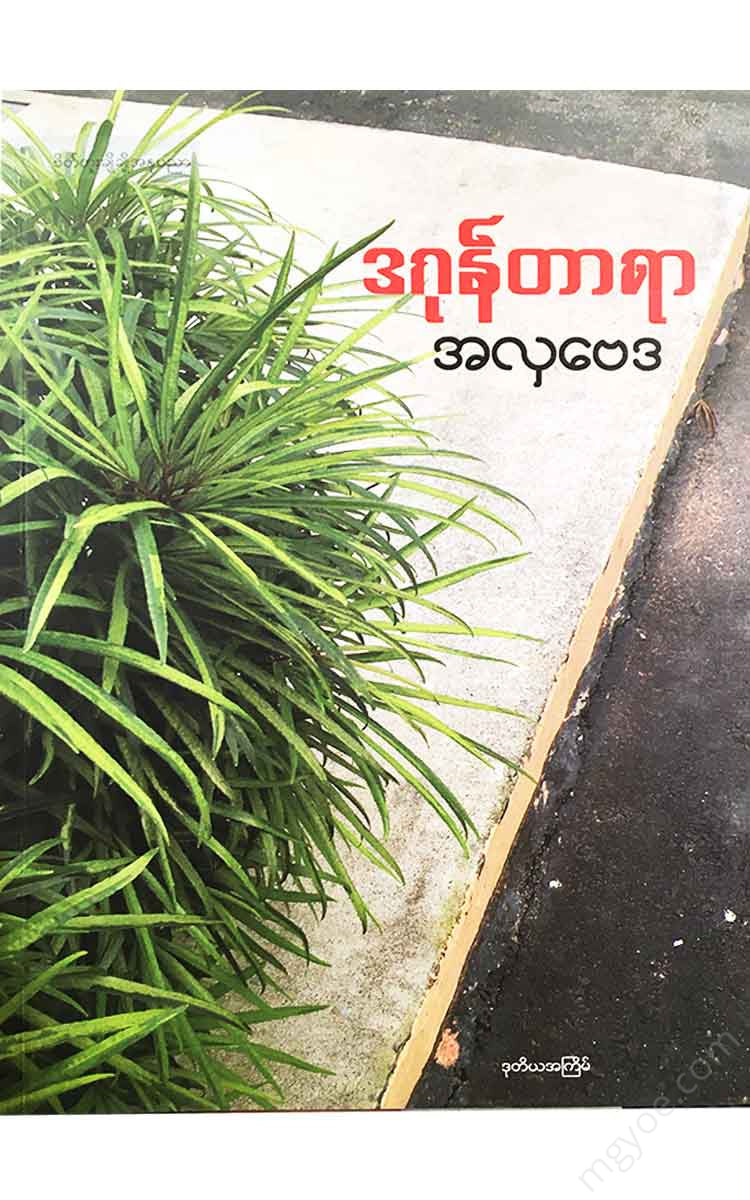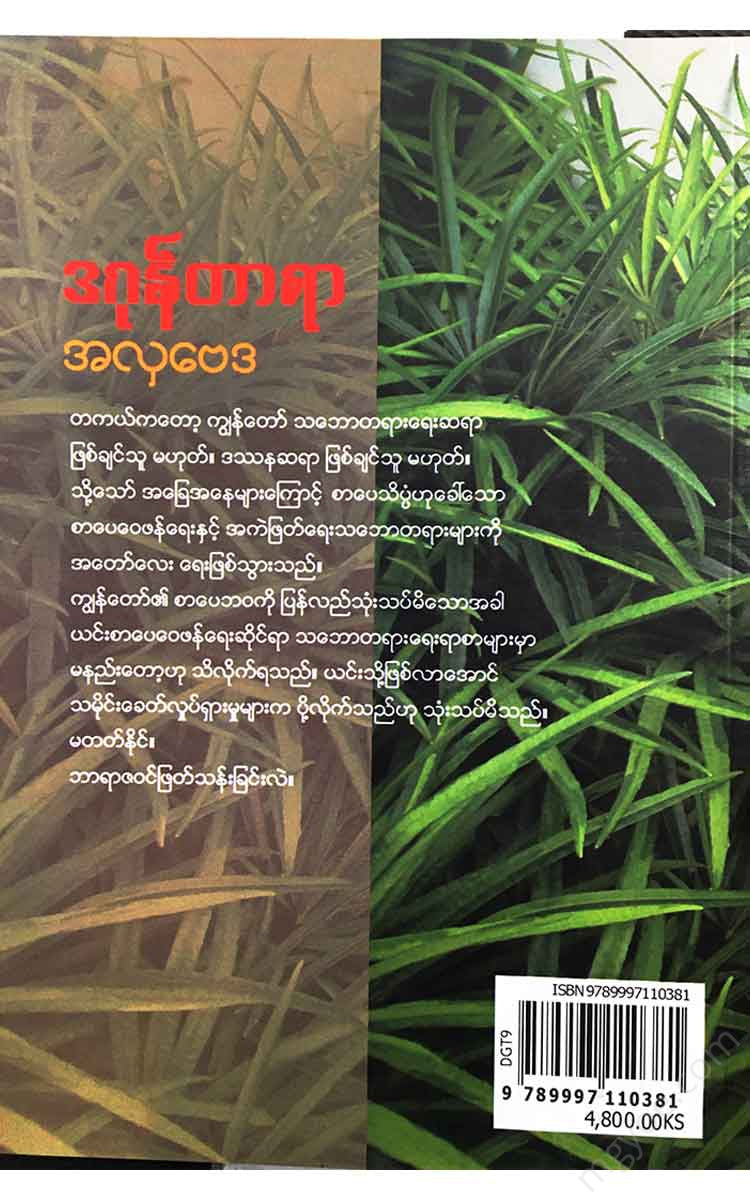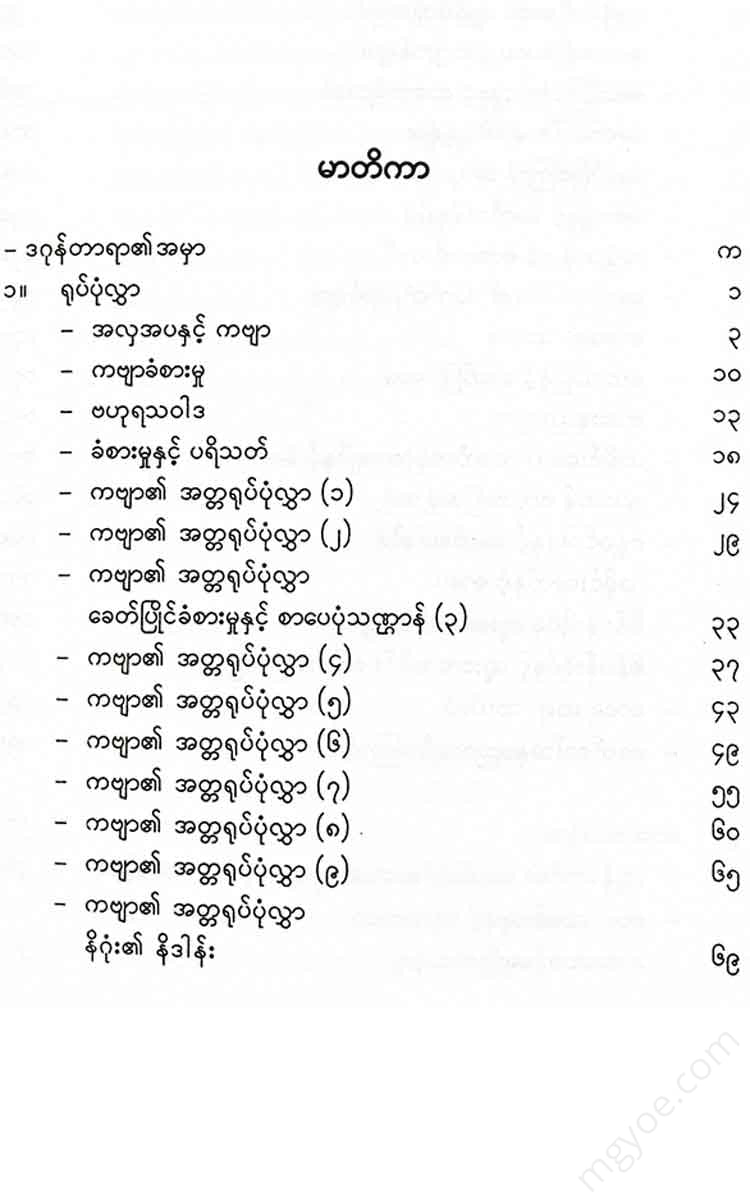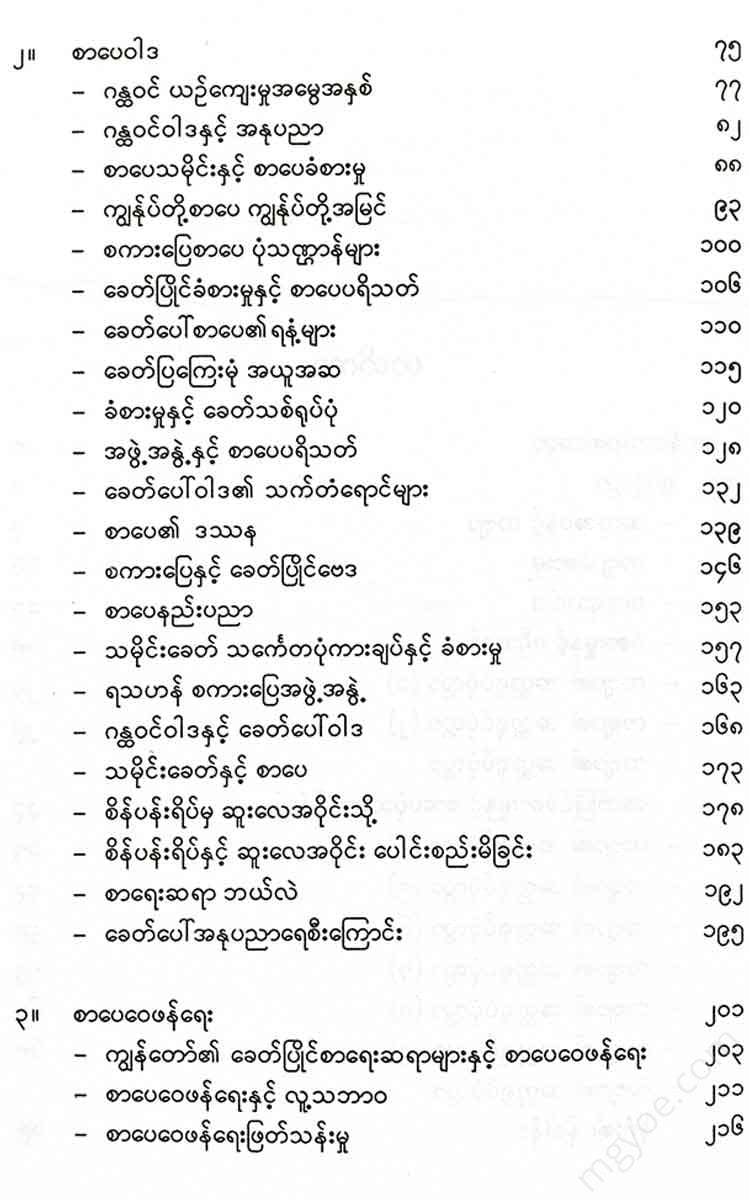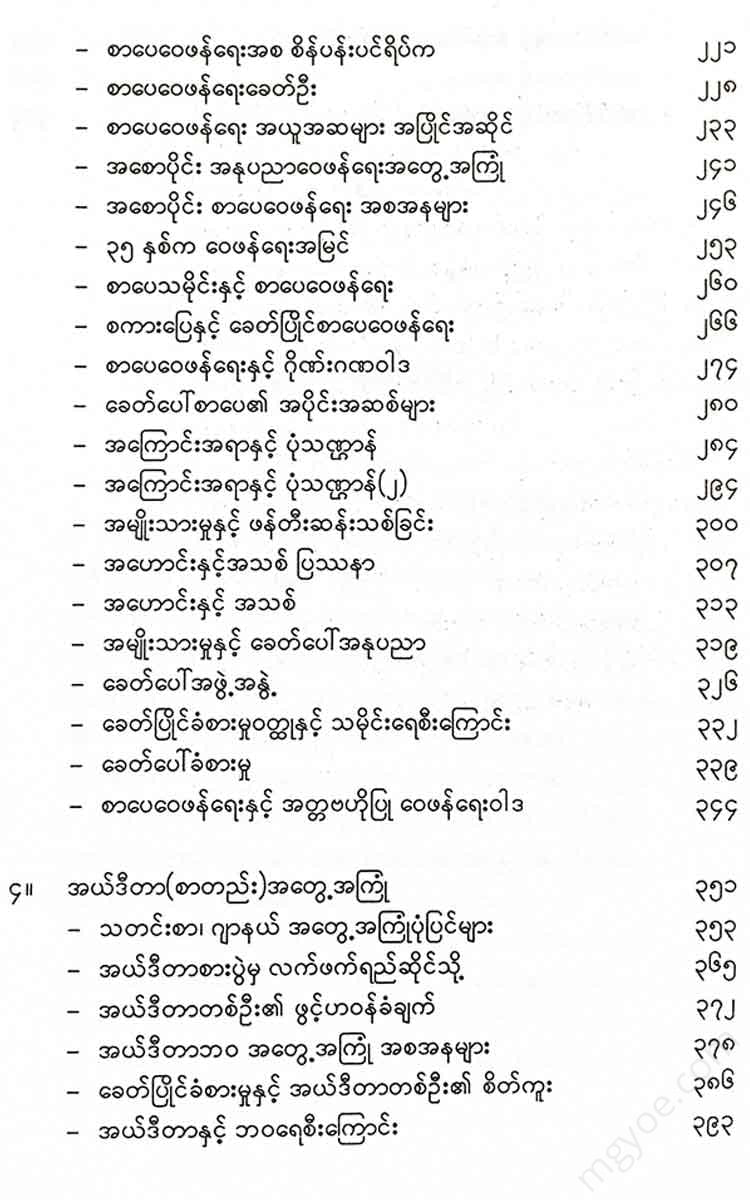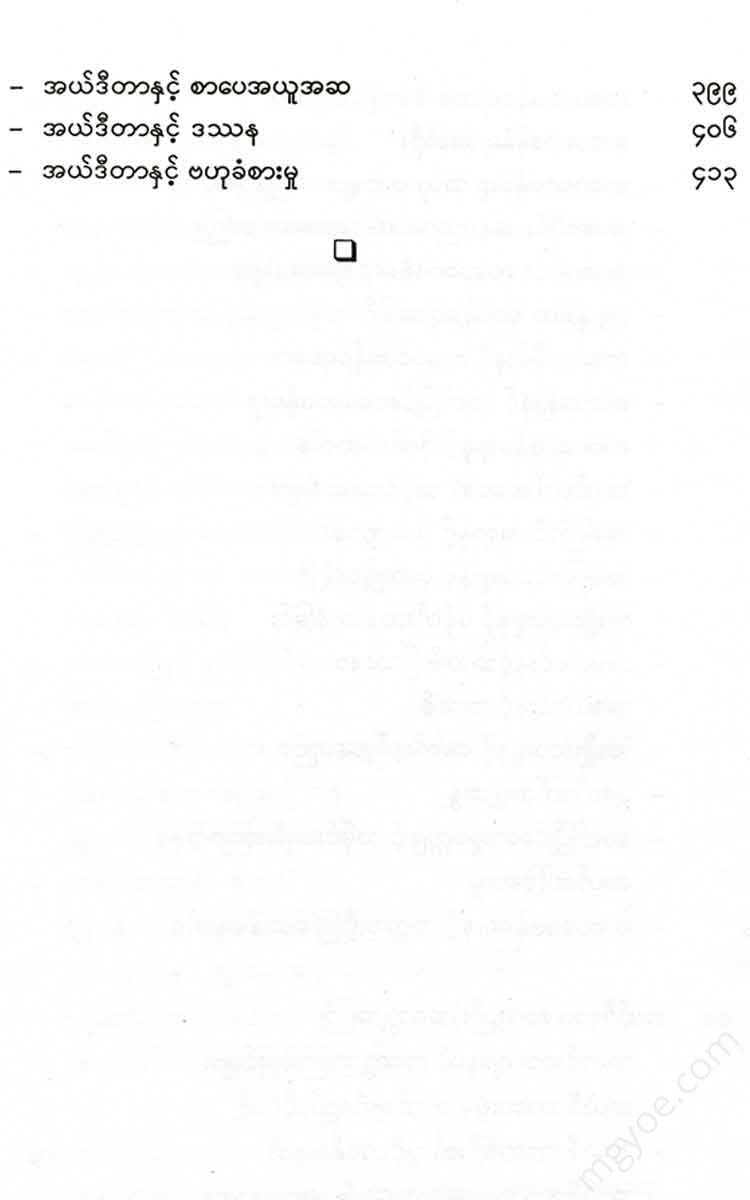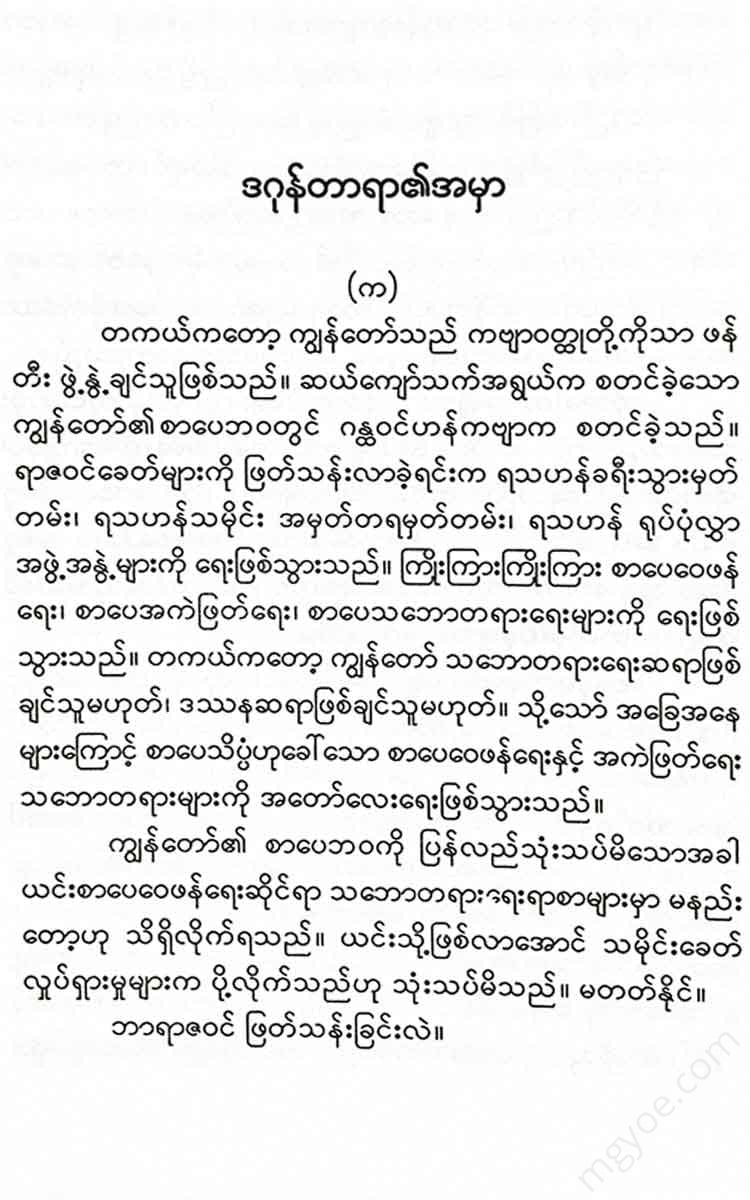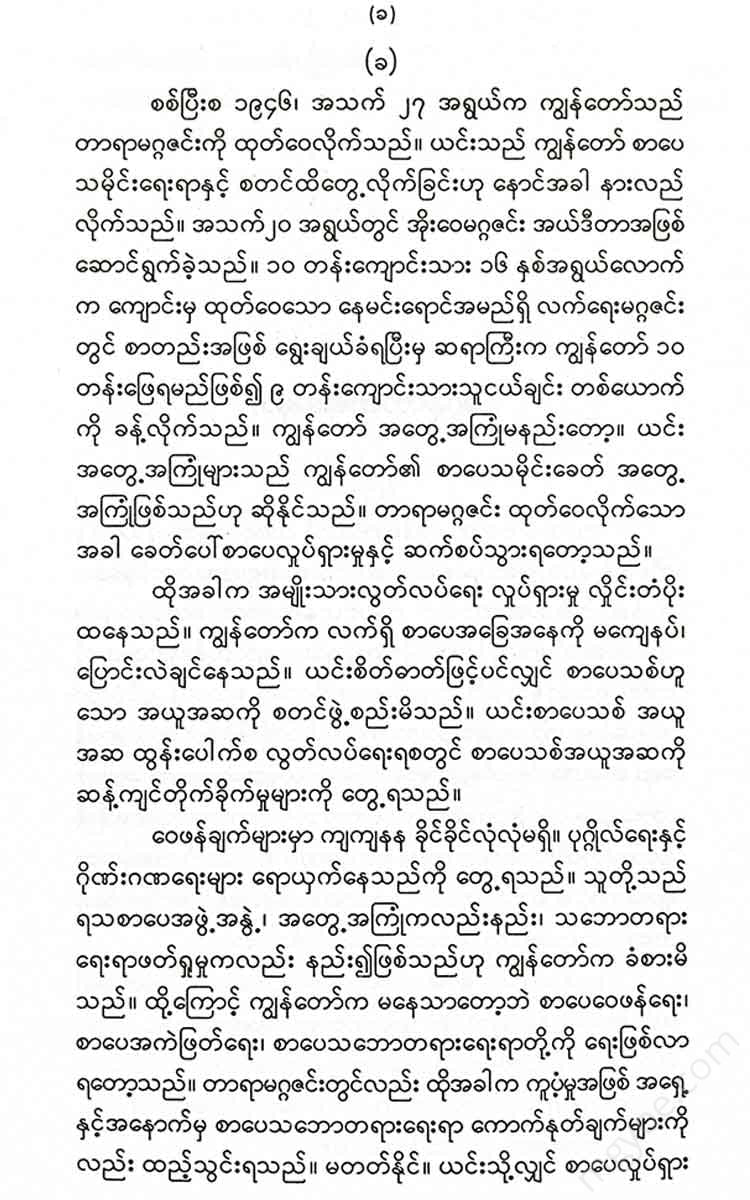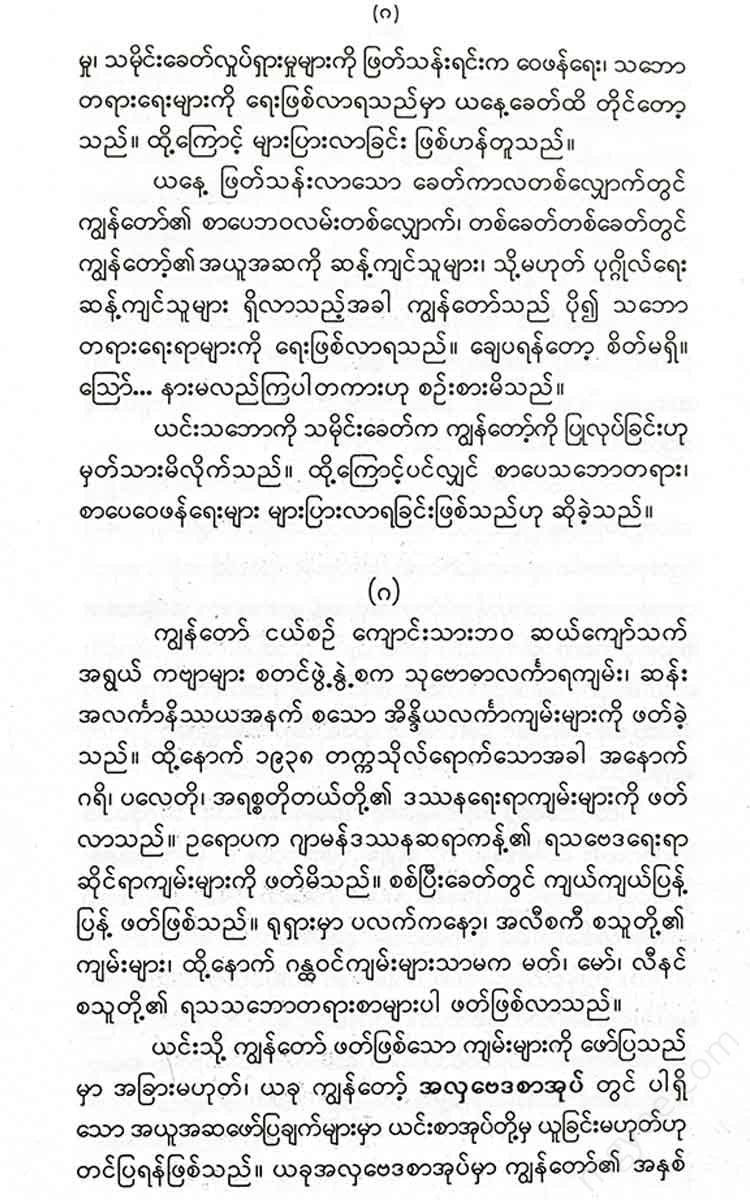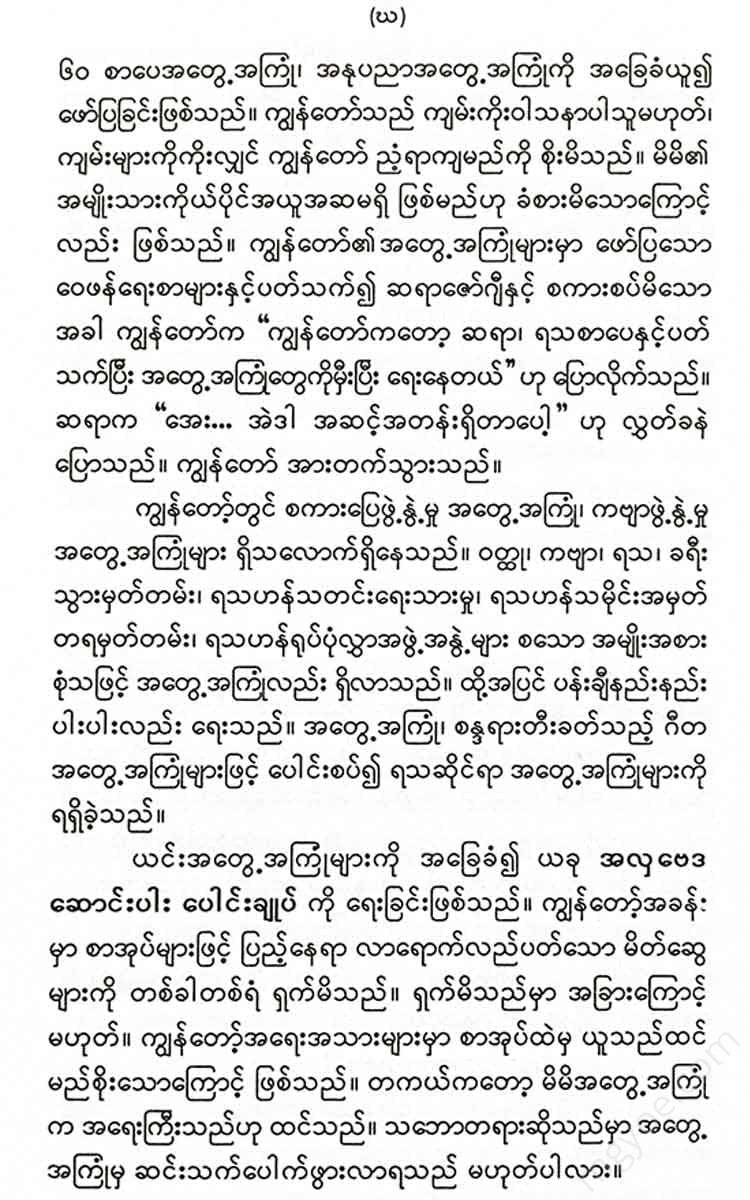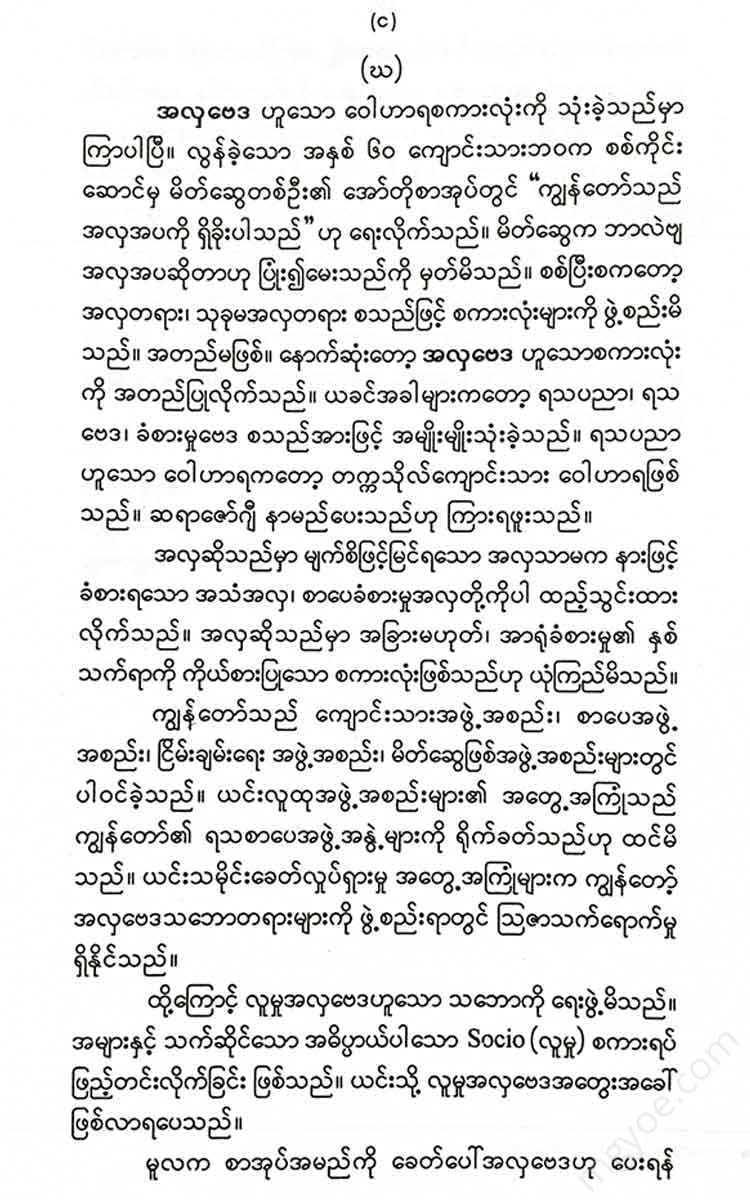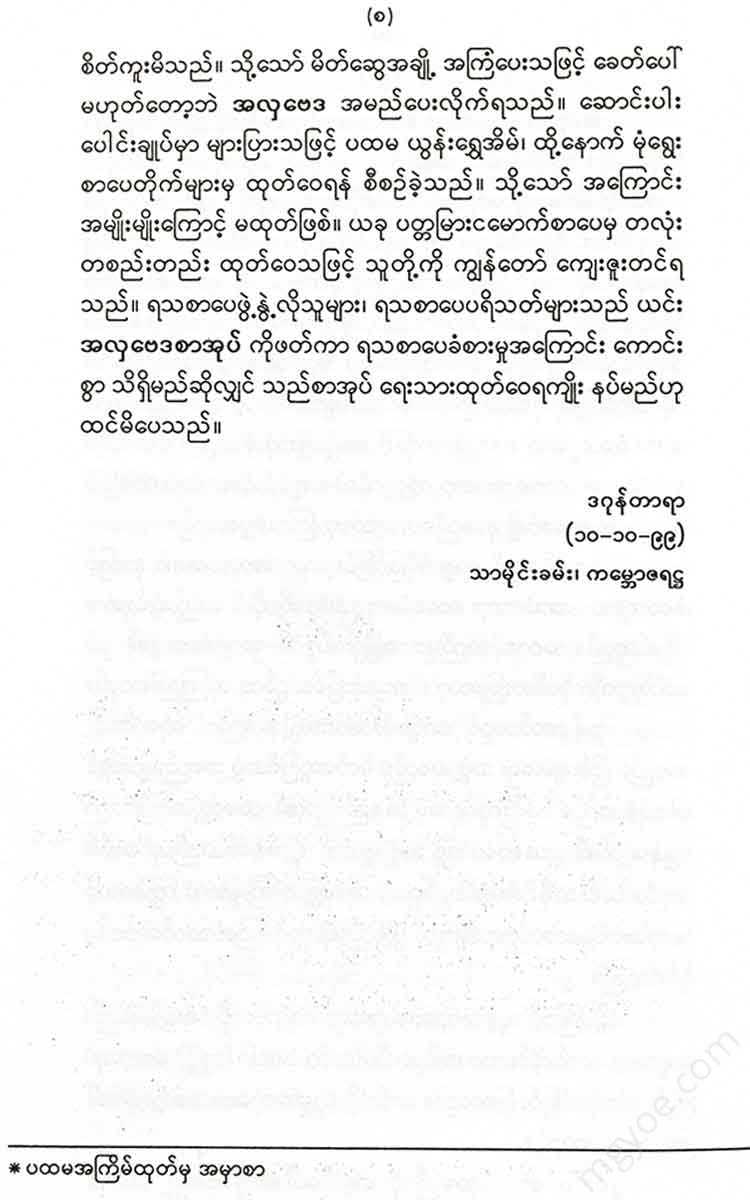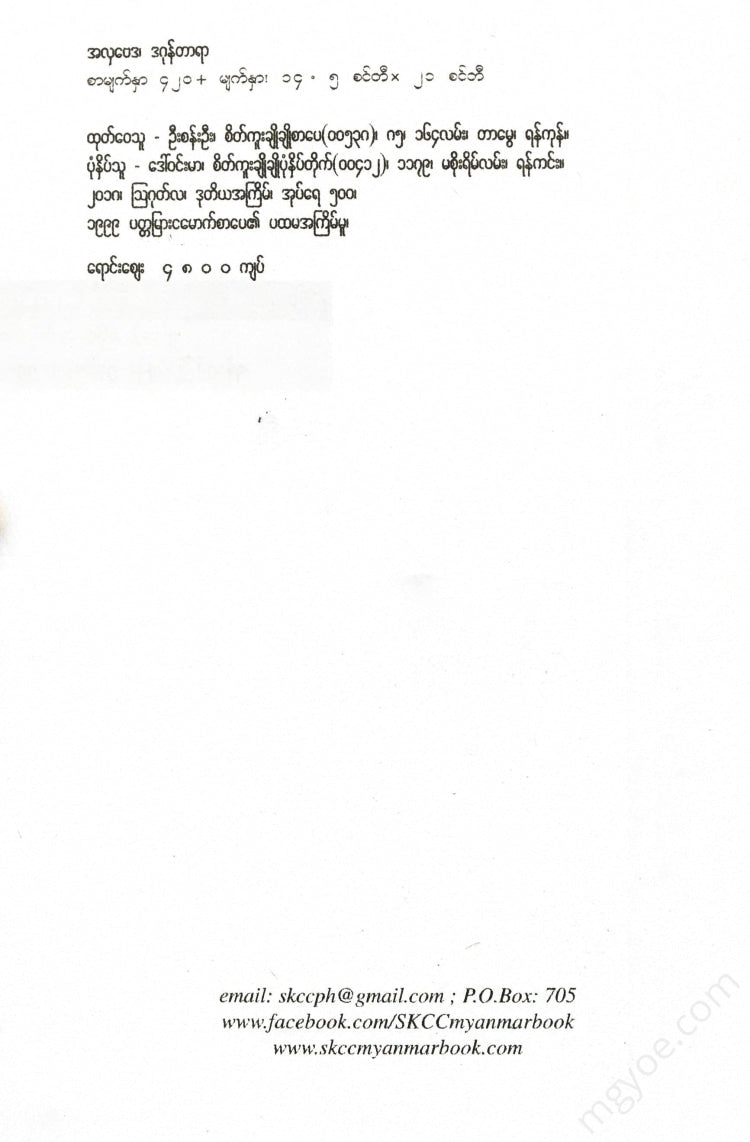စိတ်ကူးချိုချိုစာပေ
Dagontara - Aesthetics
Dagontara - Aesthetics
Couldn't load pickup availability
Beauty and poetry
Aesthetics, aesthetics, and aesthetics are the terms used in art. These words are not only used in writing but also in talking about other arts such as music, painting, film, and theater. When describing the aesthetics of music and painting, I have drawn from my own experience (which is not much). When it comes to literature, I have described it from my own experience and experience. Especially when it comes to my own poetry. These arts such as poetry, music, and painting are similar in their creative process. They are of the same nature. They are the same in their concept formation. When describing poetry, it is described in the same way as when describing painting. When describing music, it is the same.
( 1 )
When an emotion arises, the first thing to choose is whether to compose it in poetry or prose. I will leave the subject of prose aside. Emotion is the impact of the environment. In other words, it can be said that it is a reflection of the surrounding society.
It rained one afternoon. In the evening, the rain stopped and the sun came out. The clouds were moving, but the rain was not coming. The yellow and red sun was running faster. It was already night. Neon lights were lit on the street. I could hear crickets chirping here and there. I could hear people talking. These were the sounds from the area where I was temporarily living. There was a road next to the house, a large lake on the other side of the road. It was full of water during the rainy season and dry up in the summer. Green trees, grass, and a pond. A factory in the distance was flashing neon lights. Neon lights were flashing on the street. The colors of the neon lights were green and blue, floating under the water. They were spread out on the thick glass. This scene was nothing new to me, a beautiful scene I had seen before. I could hear crickets chirping. The crickets chirped from the roadside grass, under the gooseberry trees, and under the linden trees. The frogs croaked in unison from the lake. The frogs' croaking was a loud, piercing chorus. The sound of cars speeding on the road in the distance, their tires scraping against the asphalt, was a hissing, hissing sound. The sound of big and small voices on the right, the loud croaking of frogs on the left, the crickets' chirping and disappearing, the sound of the car tires scraping, the sound of the car tires scraping, the sound of the musical instruments, the sound of the ordinary, the sound of beauty, this sound, this scene, this
Along with the crickets and frogs, the sounds of people were becoming louder. Here was one, here was three. There were so many in this hole, ha... The crickets were biting and it hurt. Not only the children's voices but also the voices of adults could be heard. There were also voices from the lake.
The sound of crickets, frogs, crickets, frogs, and the sound of frogs, the sound of voices, continued until midnight. I could hear them even from my bed. Half asleep and half awake, these sounds filled the night. I had no idea or feeling to compose poetry.
When I opened the door in the morning, I was greeted by a child, about nine or 10 years old, standing in the doorway with a small bag of rice, selling it.
A cricket costs five kyats, a piece of frog meat costs four kyats.
I started to want to write poetry. I couldn't control my feelings. It had become a poem. I couldn't control the words with a simple three-syllable rhyme. The feeling of the poem was starting to determine the rhyme.
When I finished the poem, I thought of giving it the name “Cricket Festival.” I immediately rejected it. I didn’t want to call the death of crickets a festival, it would be cruel. I am a soft-hearted person. I was not happy with myself for even mentioning the word festival.
Finally, the name "Monsoon Market" was given.
The song of crickets and frogs, the sound of the surrounding environment, the beauty of the water and land, and the poem ends with the price tag of a cricket, five cents, and a frog, four kyats. The name is both beautiful and a reflection of the surrounding society, so I approve.
The feeling of the monsoon season is created by wanting to create it in the form of poetry. If a prose writer is a mere poet, he would want to create it in a literary form such as a poem or a play. Or he would not be interested in these sights and sounds, and would not write anything without feeling. People are not the same as each other, but they have the same feelings. I don't think the literary and artistic forms that express feelings are the same either. Especially young poets are no longer just composing scenes of the forest, the mountains, the forest, or the water, but are beginning to compose scenes that reflect the sounds and sounds of their surrounding society. They want to create contemporary feelings. This concept is described as social aesthetics, social aesthetics. This social aesthetics is called Socio' Aesthetics.
In painting, I don't write like poetry, I don't write a lot of pictures, the subject matter is not much, just flowers and forest landscapes. They are just beautiful. I write because I love the scenery I see. It's about expressing the feeling of the scenery through paint. There is no human factor, no social pressure on me. It's just beautiful. In other words, there is no social role, no social beauty, no social value.
A painting may be good, but it is created and composed with the imagination. Creating and composing with the imagination is the same concept as composing poetry. The method is the same.
The monsoon market of the factory village
Thunder claps
Strong winds, heavy rain
Dark clouds, lightning cracks
Split the sky, uproot the trees
Branches are scattered, bamboo is scattered.
In the rain and wind, all wet
Pre-monsoon presentation.
It's too hot in the afternoon.
The wind is strong, the sound is loud.
During the rain, in the evening
The rain is getting lighter, the clouds are drifting away.
The golden glow of twilight...
In golden light
Ruby, Mahura, etc.
Emerald, sapphire, glass, mirror
Dark, blue, misty
In front of the factory, the water is full.
Is the riverbank wide, in the emerald green?
I think it's a shadow, a neon green flower
Lost in the stars, underwater
Neon light, bright green
The factory is so green...
Neon sign
But that night, it was crowded and noisy.
The sound of people, the sound of frogs, the sound of crickets
The sound of laughter, the sound of laughter
Tomorrow morning, at sunrise.
From the doorway, the child
Four pieces of frog meat
A cricket is worth five cents.....
.
Dagon Tara
(Pan Magazine, July, 1984)
It can be said that any art is a reproduction of human life. Only the forms of art such as calligraphy and music are different. Just as poetry is composed of words, painting is composed of colors. Just as the composition of words has a structure, the composition of colors has a structure. Only through the method of structure can we express our imagination.
This is where painting comes into play more than poetry. I think I have to use my imagination more. Words are already stored in me. I hear words every day, read them. I speak them. When I compose, I think about the words and use them. The paint is only in the paint can. When I want to paint a picture, I take a brush from the can and paint it on the palette. I paint it according to the color I want. I have to use my imagination and be patient. In poetry, it is similar to inventing new words. If I use only old words to create, I don’t need to invent much. Burmese is a monosyllabic language with one sound, one meaning, so if I want to use a new meaning, I have to invent new words. Not only in poetry, but also in prose if I want to use a new meaning, I have to invent words. In poetry, words must always be new, so if I want to create more new words, I have to invent them.
The artist, after getting the desired color, paints it on the canvas in a thick layer. This creates an individual art called “craft”. Creativity, imagination, etc. are characteristics of painting. Poetry also has this creativity, imagination, and craftsmanship (I think it can be called poetic style). However, it is not as obvious and visible as painting.
(d)
There are similarities between painting and music. Just as paints are in a paint can, so are sounds in the piano keys. When you want to compose, you take them from the keys and compose sounds. Just as painting has a work, a piano has a melody. The only difference is the name. It is the same. To have a good piano melody, you have to practice constantly. Only when you practice can the notes and sounds be correct and without mistakes. The notes are not just correct. Only when there is a difference in the notes, the notes, the emphasis, etc. can you say that it is a melody. Here, in poetry, style, in painting, and melody in music are different names, but they are the same. In piano, the notes are similar, but they are called melody based on the difference in the notes. In painting, craftsmanship is defined not only by the color combination, but also by the thickness of the brush, the depth of the grain, etc.
In this way, the style of poetry, the craftsmanship of painting, and the tone of the piano are all different from each other. This difference is because the artists' feelings and ideas are different. The art that studies these artistic formations is aesthetics, rhetoric, and theology.
